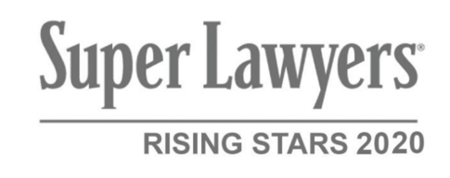Pedestrian Accidents in Marked vs. Unmarked Crosswalks
Published in Pedestrian Safety on July 7, 2020
Reading Time: 3 minutes
The streets of Boston are not safe for pedestrians. Throughout the Commonwealth of Massachusetts, 78 pedestrians died in vehicle-pedestrian collisions in 2018 alone. Pedestrians have to navigate many risks when walking around Boston. Some of the most common are distracted and negligent drivers. Collisions are most common in places where pedestrians and vehicles intersect. Crosswalks – both marked and unmarked – are some of the most dangerous places for pedestrians.
What Are Unmarked Crosswalks?
Crosswalks are places where pedestrians can safely cross road traffic to get to the other side of the street. They help facilitate safe pedestrian crossings by providing designated points to do so. From a legal standpoint, crosswalks are extensions of sidewalks. An unmarked crosswalk is a place a pedestrian can lawfully cross the road that does not have paint, lights or signs designating it as a road-crossing point. Just because a crosswalk is unmarked, however, does not mean pedestrians cannot cross.
In Massachusetts, pedestrians can cross the road at any intersection (except when specifically prohibited). Any point where two roads intersect is a place where a pedestrian can legally cross. A pedestrian does not need a marked crosswalk or traffic control signal for permission to cross at an intersection. Intersections without these designations are technically unmarked crosswalks. In most states, pedestrians can also cross streets in residential areas at places other than crosswalks. This would make the entire residential street an unmarked crosswalk.
What Are Marked Crosswalks?
A marked crosswalk has road markings and/or traffic signals demonstrating the crosswalk exists. A marked crosswalk has visible designations that an unmarked crosswalk does not. These may include painted white lines on the street, a blinking yellow light, pedestrian crossing signs, and/or a crosswalk signal. A marked crosswalk may exist at an intersection or a place other than an intersection. Busy downtown streets in Boston, for example, may have marked crosswalks in the middle of a street between two intersections.
Which Are More Dangerous?
At an unmarked crosswalk at an intersection, pedestrians always have the right-of-way. Section 11 of the General Laws in Massachusetts states that all motorists must yield to pedestrians trying to cross where traffic control signals are not in place. If the unmarked crosswalk is the middle of a residential street, however, pedestrians must yield to oncoming cars. A pedestrian cannot step out into traffic at a place other than a marked crosswalk or intersection unless it is safe to do so.
In a marked crosswalk, the pedestrian does not always have the right-of-way. Instead, the pedestrian may have to yield to traffic if he or she does not have the green light or walk signal. A pedestrian may only cross a marked crosswalk when given the signal to do so. When a pedestrian is in a crosswalk, a driver must yield when the pedestrian reaches his or her half of the road.
Many people assume an unmarked crosswalk would be more dangerous than a marked one for pedestrians. Yet the confusion surrounding Massachusetts’ crosswalk laws actually puts pedestrians at greater risk in marked crosswalks. Drivers often assume they have the right-of-way at marked crosswalks if they do not have any signs. They do not realize they should yield to pedestrians even without signs or lights.
Which Type of Crosswalk Has More Accidents?
In Boston, pedestrian accidents occur at both marked and unmarked crosswalks. They are more common, however, at marked crosswalks. A combination of factors makes marked crosswalks more dangerous for pedestrians. Pedestrians often experience a false sense of safety in marked crosswalks that makes them less vigilant when crossing. They may assume they have the right-of-way when they do not and step out without looking. Drivers may misunderstand how the marked crosswalk works and fail to yield to pedestrians. If you get into a pedestrian accident at any type of crosswalk in Boston, speak to a lawyer about your rights.
For more information, call our law office at (617)-391-9001. Or if you would prefer to email us, then please visit our contact page.
Comments are closed.










